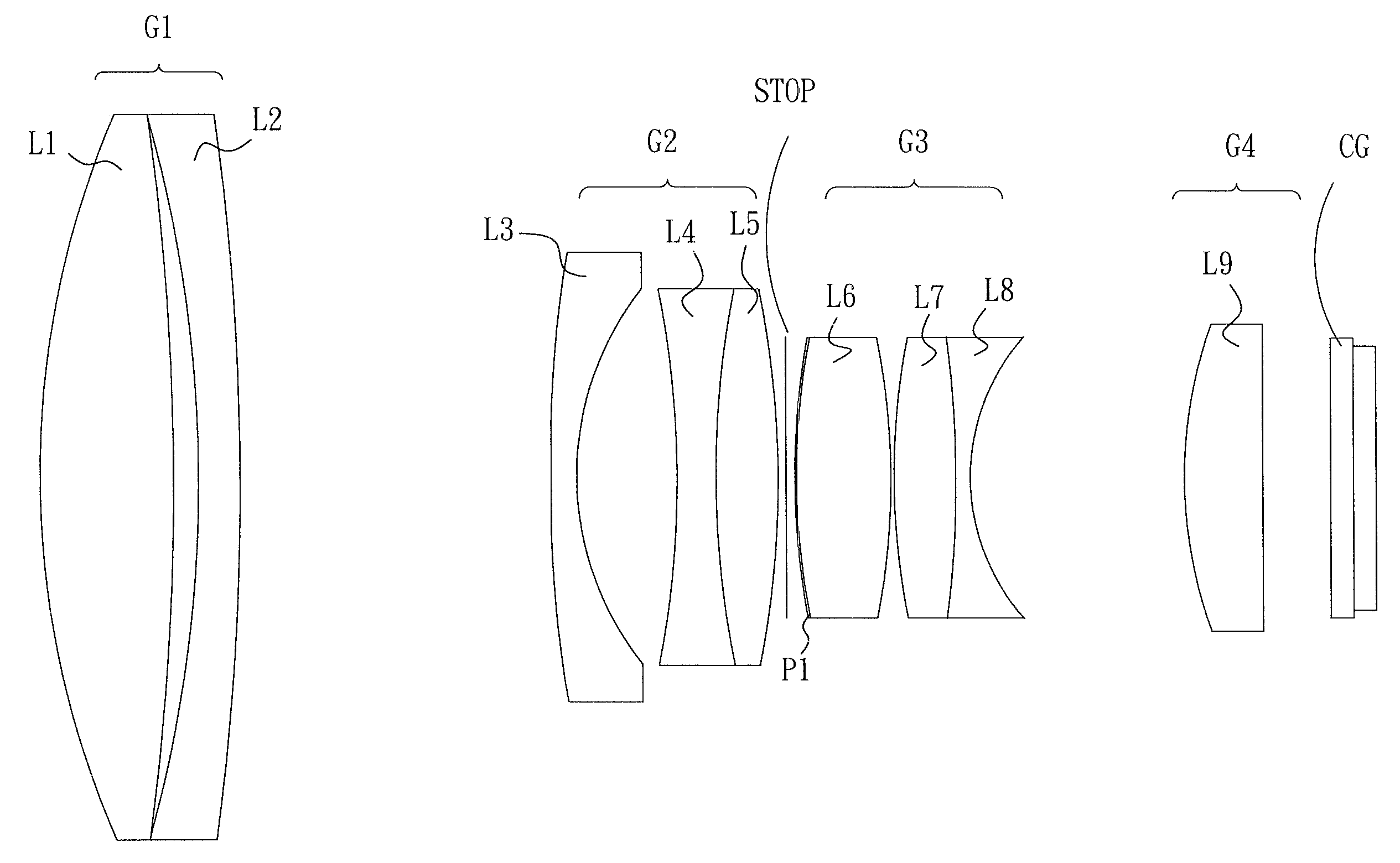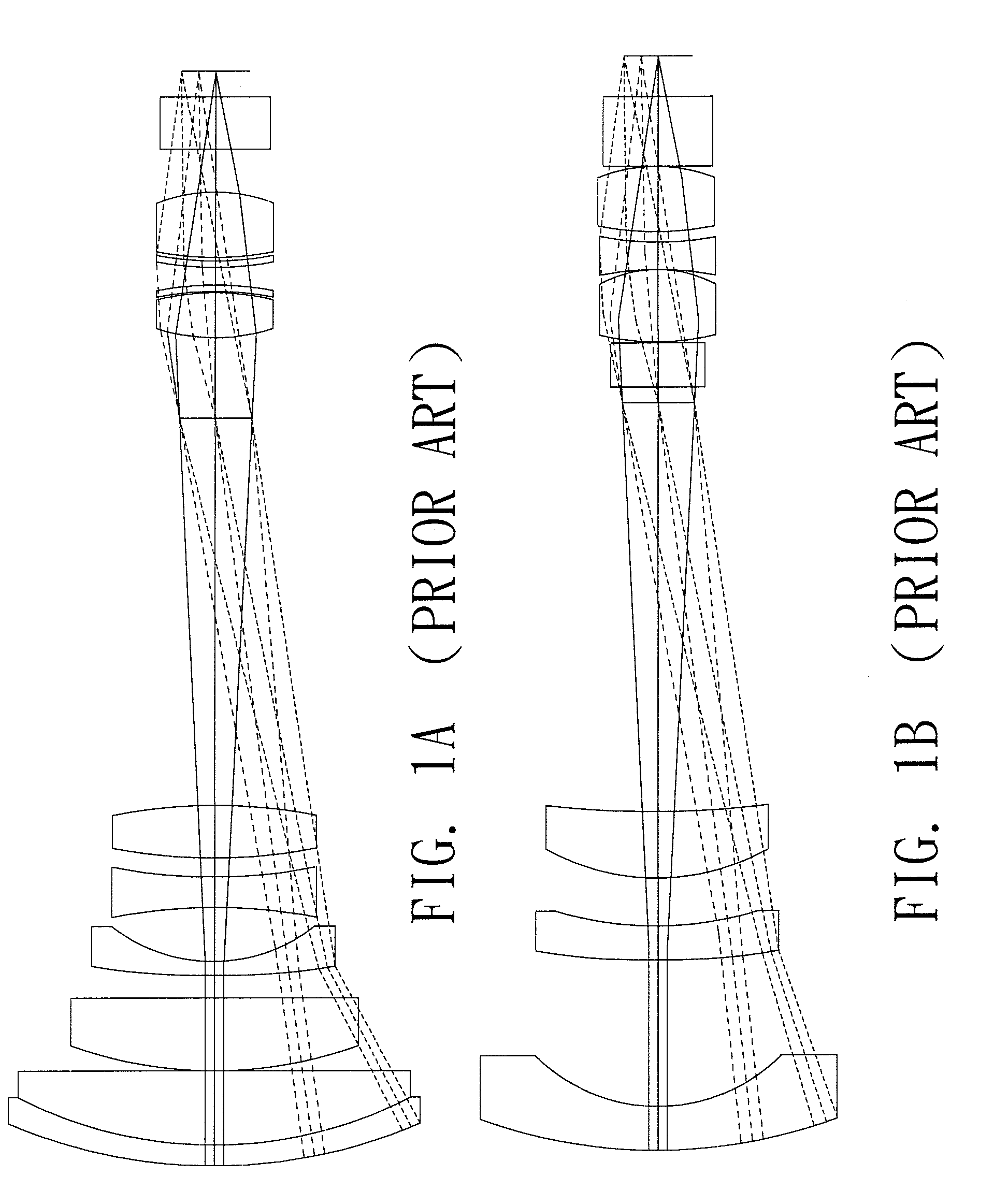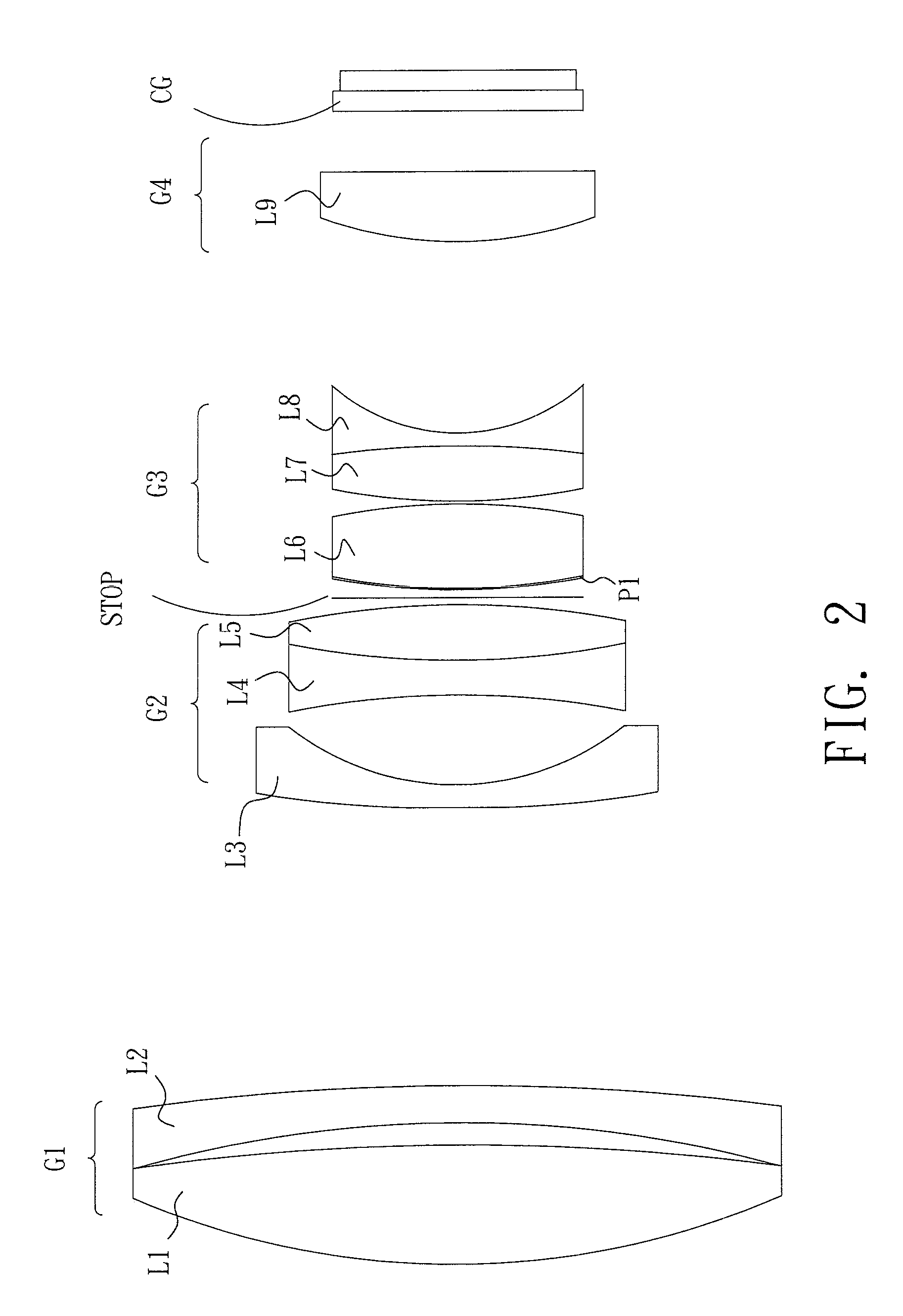Zoom lens system
a zoom lens and lens body technology, applied in the field of zoom lens systems, can solve the problems of aberration fluctuations, long overall length significant increase of cost, volume and weight of the zoom lens system, etc., and achieve the effect of reducing the number of constituent lenses and high image resolution
- Summary
- Abstract
- Description
- Claims
- Application Information
AI Technical Summary
Benefits of technology
Problems solved by technology
Method used
Image
Examples
embodiment 1
[0048]Table 3 shows variable distances (in unit of millimeters) between adjacent lens groups at the respective system effective focal lengths, namely, at the wide-angle end (W, f=8.05), an intermediate zoom position (M, f=16.07) and the telephoto end (T, f=31.31) of the zoom lens system of Numerical
TABLE 3EffectiveVariableVariableVariableVariableFocal LengthDistance 1Distance 2Distance 3Distance 4W (f = 8.05)0.217.083134.3881754.437559M (f = 16.07)10.2178777.0078021.2862468T (f = 31.31)19.3342060.7999150.815
[0049]FIGS. 4 and 5 respectively show positions of lens groups constituting the zoom lens system of Numerical Embodiment 1 at the wide-angle end and the telephoto end. It is shown that, during focal length change, the first lens group G1 and the fourth lens group G4 remain stationary. The positions of the second lens group G2, the stop and the third lens group G3 are changed to obtain a desired zoom ratio and a better image. The first, second and third lens groups G1, G2 and G3 s...
embodiment 2
[0057]Table 5 shows aspheric coefficients of aspheric surfaces for Numerical It can be seen that the object-side surface of the first aspheric lens L3, the object-side surface of the resin hybrid lens L6 and the object-side surface of the second aspheric lens L9 are aspheric.
TABLE 5surface (i)KE4E6E8E10503.6868 × 10−5−1.3882 × 10−7 4.2351 × 10−100110 −1.57 × 10−49.7583 × 10−7−4.1163 × 10−86.3989 × 10−10170−6.3985 × 10−5 6.2073 × 10−7−1.1467 × 10−84.3291 × 10−11
[0058]Table 6 shows variable distances between adjacent lens groups at the respective system effective focal lengths, namely at the wide-angle end (W, f=8.09), an intermediate zoom position (M, f=16.05) and the telephoto end (T, f=31.28) of the zoom lens system of Numerical Embodiment 2.
TABLE 6EffectiveVariableVariableVariableVariableFocal LengthDistance 1Distance 2Distance 3Distance 4W (f = 8.09)0.96516.03264.62123.3118M (f = 16.05)10.5076.691.146.7124T (f = 31.28)19.6520.81.014.408
[0059]FIGS. 14 and 15 respectively sho...
embodiment 3
[0061]Table 8 shows aspheric coefficients of aspheric surfaces for Numerical It can be seen that the two surfaces of the first aspheric lens L3, the object-side surface of the resin hybrid lens L6 and the object-side surface of the second aspheric lens L9 are aspheric.
TABLE 8surface (i)KE4E6E8E10506.0725 × 10−5−2.8236 × 10−7 4.7037 × 10−109.4522 × 10−13602.2893 × 10−5 8.292 × 10−7−8.5921 × 10−90110 −1.49 × 10−45.9831 × 10−7−4.0203 × 10−87.8332 × 10−10170−7.7792 × 10−5 6.6779 × 10−7−1.4069 × 10−86.3954 × 10−11
[0062]Table 9 shows variable distances between adjacent lens groups at the respective system effective focal lengths, namely at the wide-angle end (W, f=8.1), an intermediate zoom position (M, f=16.07), and the telephoto end (T, f=31.34) of the zoom lens system of Numerical Embodiment 3.
TABLE 9EffectiveVariableVariableVariableVariableFocal LengthDistance 1Distance 2Distance 3Distance 4W (f = 8.1)0.316.69613.9153.6258M (f = 16.07)10.4776.8861.147.296T (f = 31.34)19.7790.81....
PUM
 Login to View More
Login to View More Abstract
Description
Claims
Application Information
 Login to View More
Login to View More - R&D
- Intellectual Property
- Life Sciences
- Materials
- Tech Scout
- Unparalleled Data Quality
- Higher Quality Content
- 60% Fewer Hallucinations
Browse by: Latest US Patents, China's latest patents, Technical Efficacy Thesaurus, Application Domain, Technology Topic, Popular Technical Reports.
© 2025 PatSnap. All rights reserved.Legal|Privacy policy|Modern Slavery Act Transparency Statement|Sitemap|About US| Contact US: help@patsnap.com



